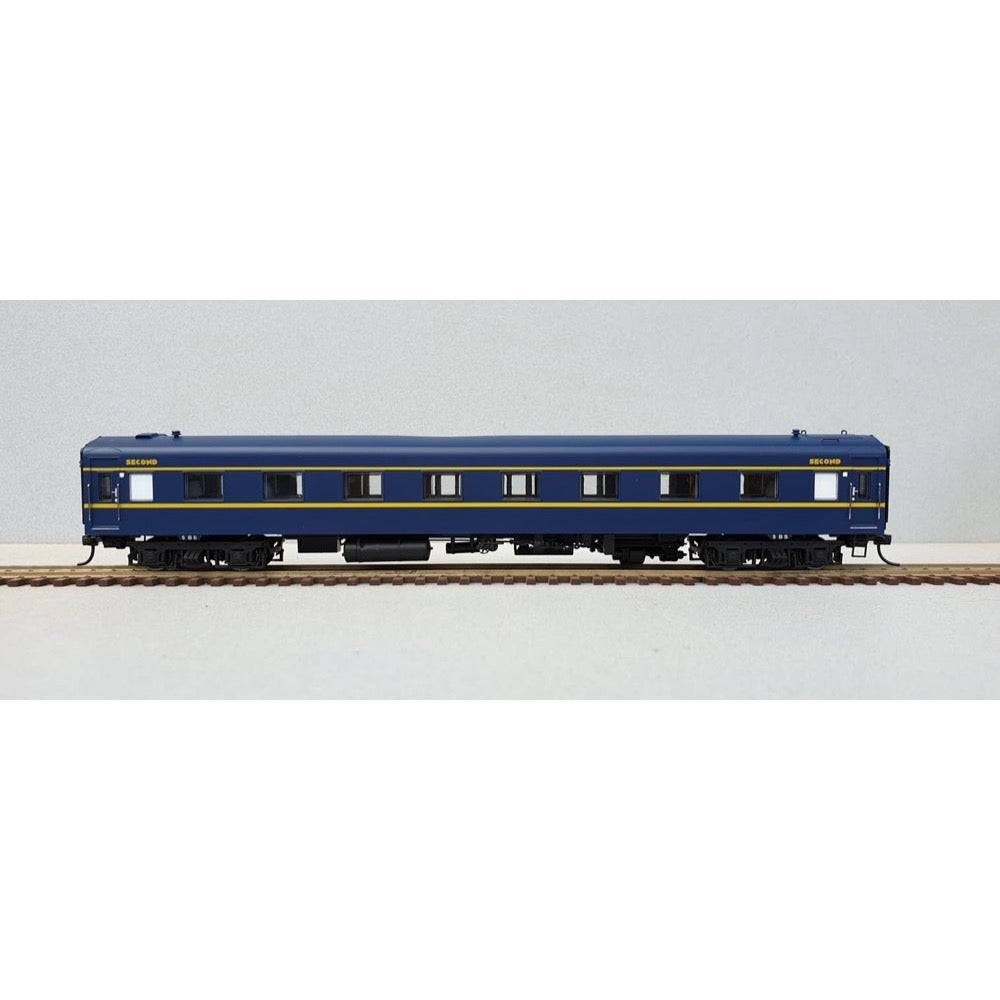
Powerline PC-406B HO 9 BS VR Blue & Gold S Type Carriage Second Art Deco
69.00
$
<h3>Powerline PC-406B HO 9 BS VR Blue & Gold S Type Carriage Second Art Deco</h3>
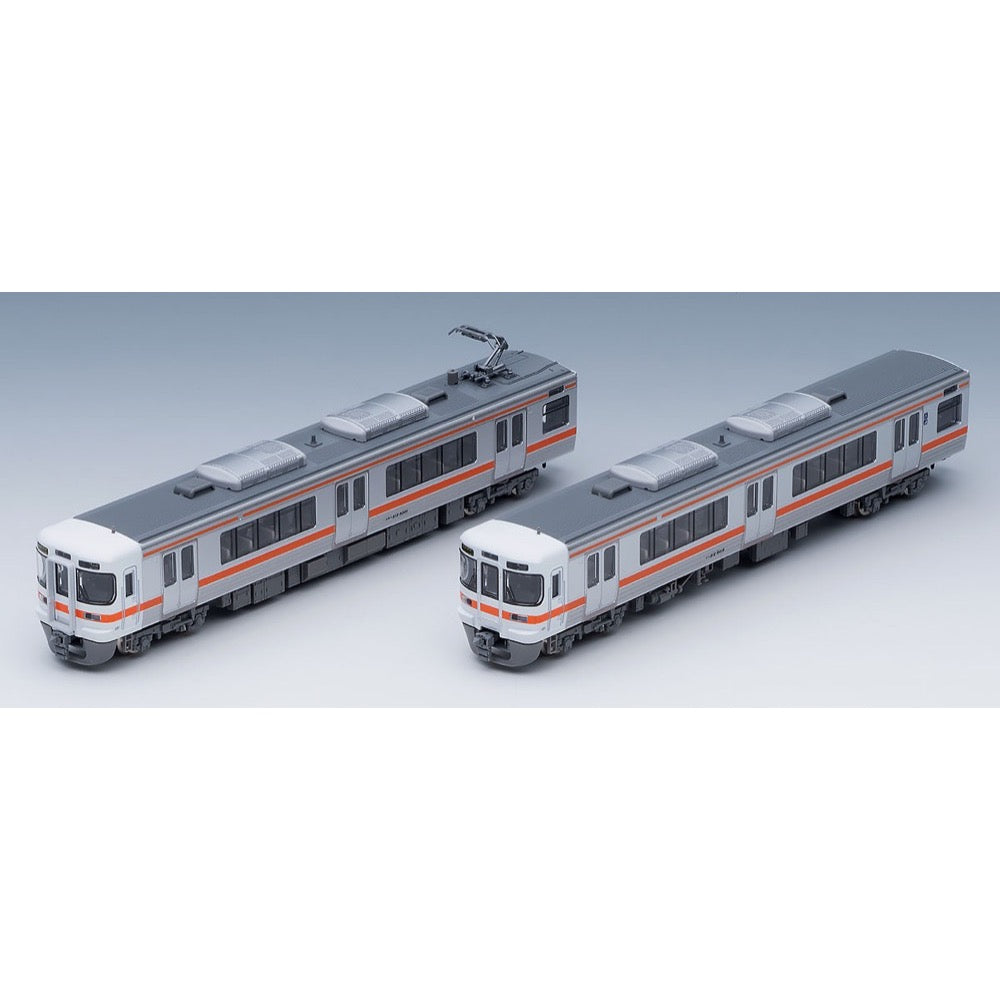
Tomix 98484 N 313-5000 Suburban Train Addon Set B 2cars
48.00
$
<p>The 313 series is a commuter train for the Nagoya and Shizuoka areas that was introduced in 1998.</p>
<p>Of the 5000 series that was introduced in 2006, two-car formations are used as additional cars for the 0 and 5000 series.</p>
<h3>Features</h3>
<ul>
<li>Car numbers are selectable and a transfer sheet is included</li>
<li>The sides of the car are reproduced in two types of silver, excluding the door frames</li>
<li>The front display is equipped with a printed part ``Special Rapid Toyohashi''</li>
<li>The head and tail lights and the front display are lit with white LEDs</li>
<li>The head and tail lights and the front display are equipped with a constant lighting board and an ON-OFF switch</li>
<li>Only the driver's cab of the leading car is equipped with a TN coupler (SP)</li>
<li>New current collection system and silver wheels are used</li>
</ul>
<h3>Contents</h3>
<p><strong>Vehicles</strong></p>
<ul>
<li>KuMoHa313-5300</li>
<li>KuHa312-5000</li>
</ul>
<p><strong>Accessories</strong></p>
<ul>
<li>Runner parts: Front display parts</li>
<li>Runner parts: Signal flares</li>
<li>Parts: Hood frame</li>
<li>Transfer sheet: Car number, etc.</li>
</ul>
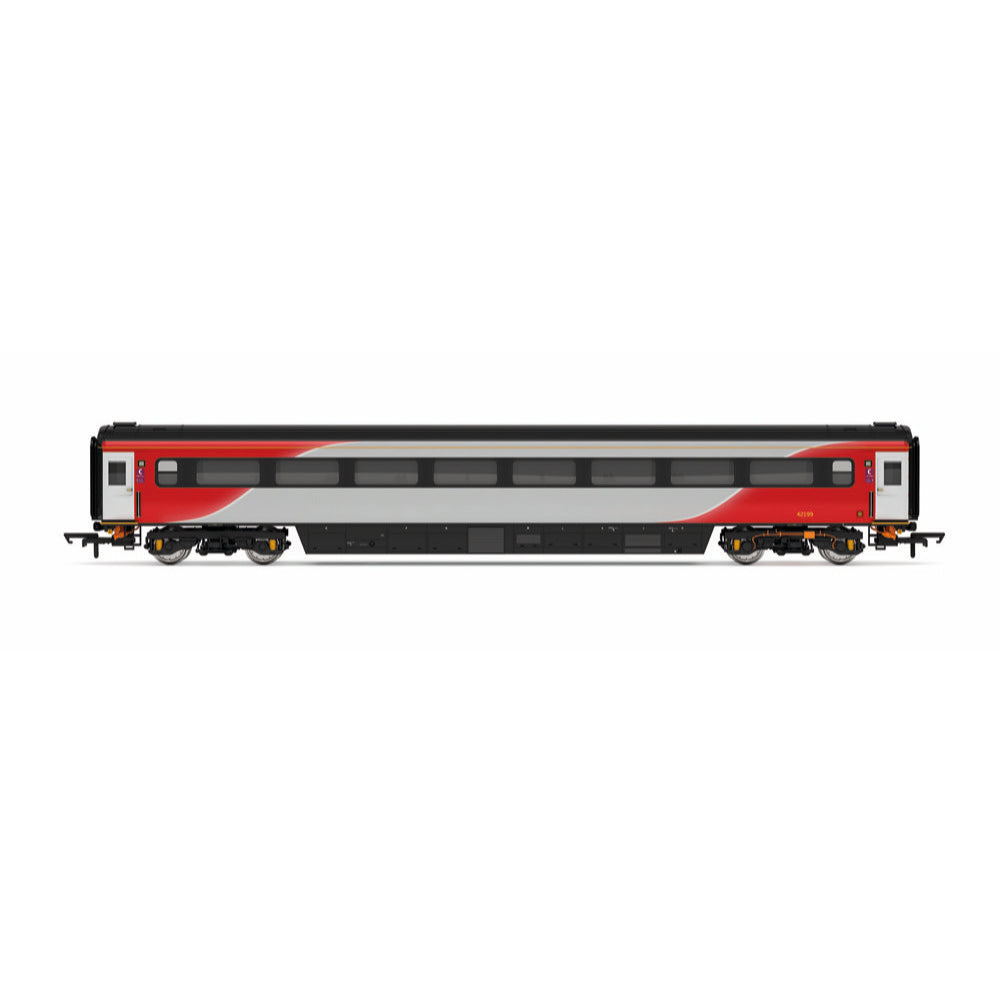
Hornby R40249C OO LNER Mk3 Trailer Standard 42235
32.00
$
<p>LNER inherited a large fleet of IC 125 and IC 225 sets from InterCity East Coast, but quickly began replacing the stock with more modern Hitachi built high-speed multiple units. The last IC 125 train operated by LNER ran as part of a farewell tour at the end of 2019.</p>
<h4>Includes</h4>
<ul>
<li>1x Rolling stock Coach</li>
</ul>
<h4>Technical Specifications</h4>
<div>
<ul>
<li>Item Length - Without Packaging (cm): 30.3</li>
<li>Item Height - Without Packaging (cm): 5</li>
<li>Item Width - Without Packaging (cm): 3.5</li>
<li>Item Weight - Without Packaging: 0.19</li>
<li>Item Scale: 1:76 Scale 00 Gauge</li>
<li>License: Yes</li>
<li>License line: Produced under license for SCMG Enterprises Ltd. ©SCMGE.</li>
<li>Finish: Painted</li>
<li>Colour: Red</li>
<li>Operator: LNER</li>
<li>Designer: BREL</li>
<li>Livery: LNER Red</li>
<li>Minimum Curve (mm): Radius 2</li>
<li>Number of Parts: 1</li>
</ul>
</div>
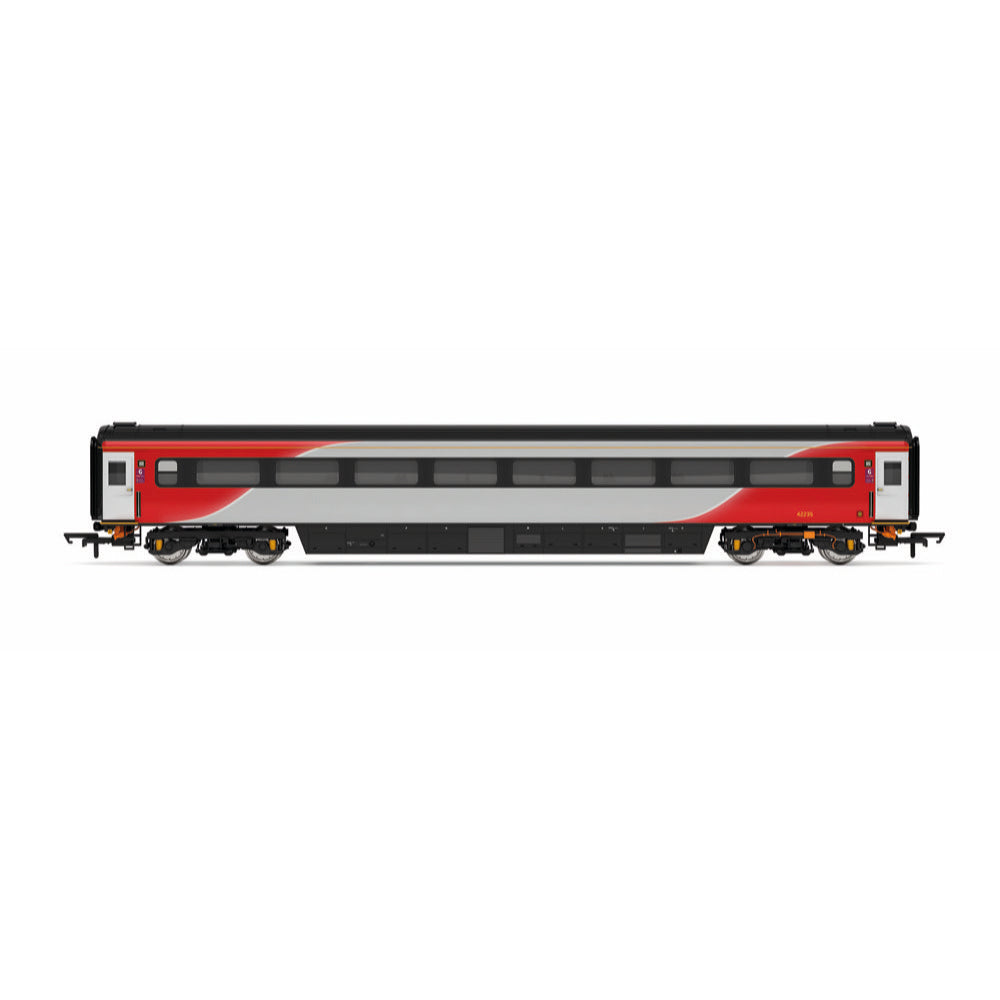
Hornby R40249 OO LNER Mk3 Trailer Standard 42199
32.00
$
<p>LNER inherited a large fleet of IC 125 and IC 225 sets from InterCity East Coast, but quickly began replacing the stock with more modern Hitachi built high-speed multiple units. The last IC 125 train operated by LNER ran as part of a farewell tour at the end of 2019.</p>
<h4>Includes</h4>
<ul>
<li>1x Rolling stock Coach</li>
</ul>
<h4>Technical Specifications</h4>
<div>
<ul>
<li>Item Length - Without Packaging (cm): 30.3</li>
<li>Item Height - Without Packaging (cm): 5</li>
<li>Item Width - Without Packaging (cm): 3.5</li>
<li>Item Weight - Without Packaging: 0.19</li>
<li>Item Scale: 1:76 Scale 00 Gauge</li>
<li>License: Yes</li>
<li>License line: Produced under license for SCMG Enterprises Ltd. ©SCMGE.</li>
<li>Finish: Painted</li>
<li>Colour: Red</li>
<li>Operator: LNER</li>
<li>Designer: BREL</li>
<li>Livery: LNER Red</li>
<li>Minimum Curve (mm): Radius 2</li>
<li>Number of Parts: 1</li>
</ul>
</div>

Hornby R4929 LNER Mk3 Trailer First Open TFO 41120 - Era 11
27.00
$
<p>In-order to allow running at 125 mph on Britain's Victorian era railways, new rolling stock was needed by British Railways. Significant improvements over the Mk2 included new secondary air suspension between the bogies and the coach body as well as aerodynamic skirting on the underframe. Mk3 coaches are 75ft (23m) long enabling far greater capacity than older coaches. Mk3 coaches also incorporate disk breaks and wheel slip protection enabling faster deceleration.</p>
<p>The first Mk3 coaches to be delivered were used as part of the HST prototype along with the two Class 41 diesel power cars in 1972. Mk3 coaches entered service in 1975 along with the Class 43 forming the iconic InterCity 125 trainset. In the Mid-2000s the Mk3 stock belonging to the InterCity East Coast franchise, operated by GNER, received refurbishment to bring them up to the same level as the Mk4 coaches that had been refurbished as part of 'Project Mallard'. LNER inherited its fleet of Mk3 coaches in 2018 after taking over the InterCity East Coast franchise from Virgin Trains East Coast.</p>
<p>The introduction of Class 800 and 801 sets has seen LNER replace all its InterCity 125 sets and as a result Mk3 coaches ceased operating with LNER after a farewell tour at the end of December 2019. Nine of the fourteen HST sets transferred to East Midlands Railway.</p>
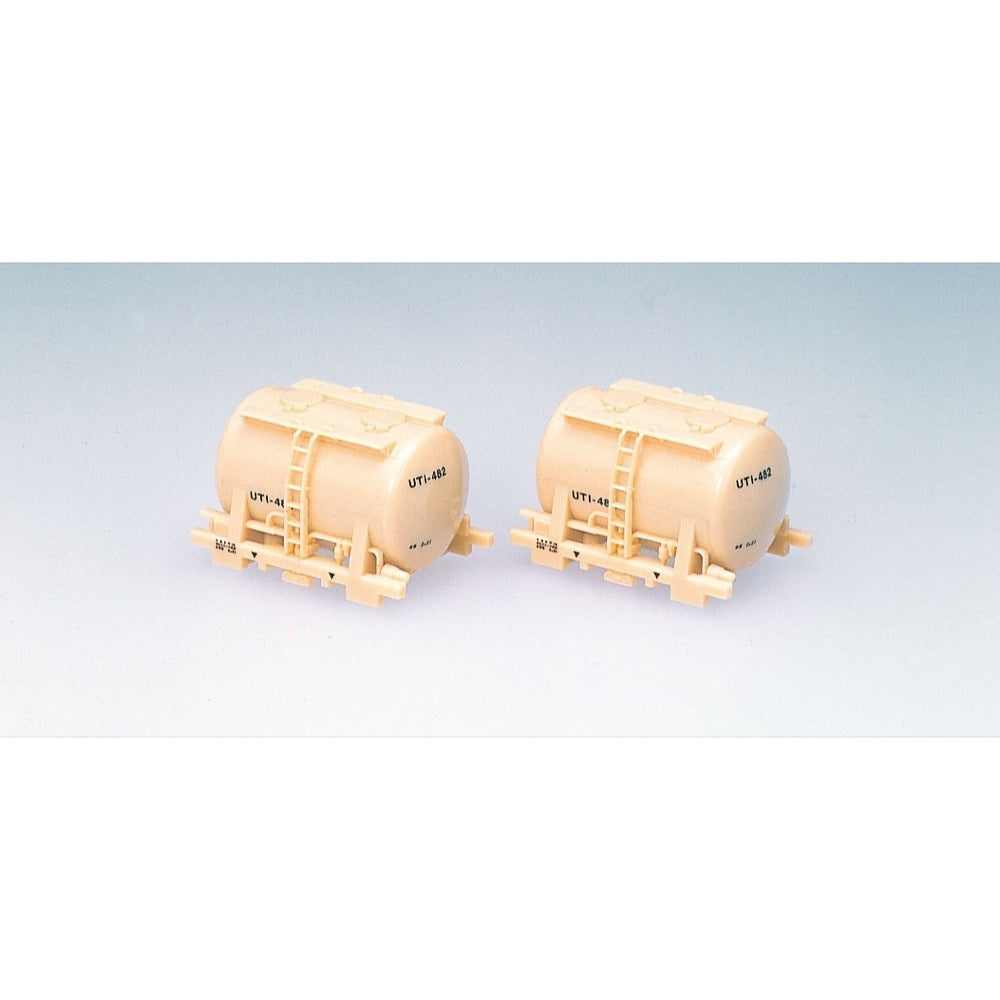
Tomix 3115 N UT1 Tank Container CREAM
7.00
$
<p>A container specially designed for transporting liquids and powders, which has been used since the days of Japanese National Railways.</p>
<h3>Features</h3>
<ul>
<li>Cream colored 2 piece set</li>
<li>Can be easily mounted on various container cars such as Koki 50000 and Koki 104</li>
</ul>
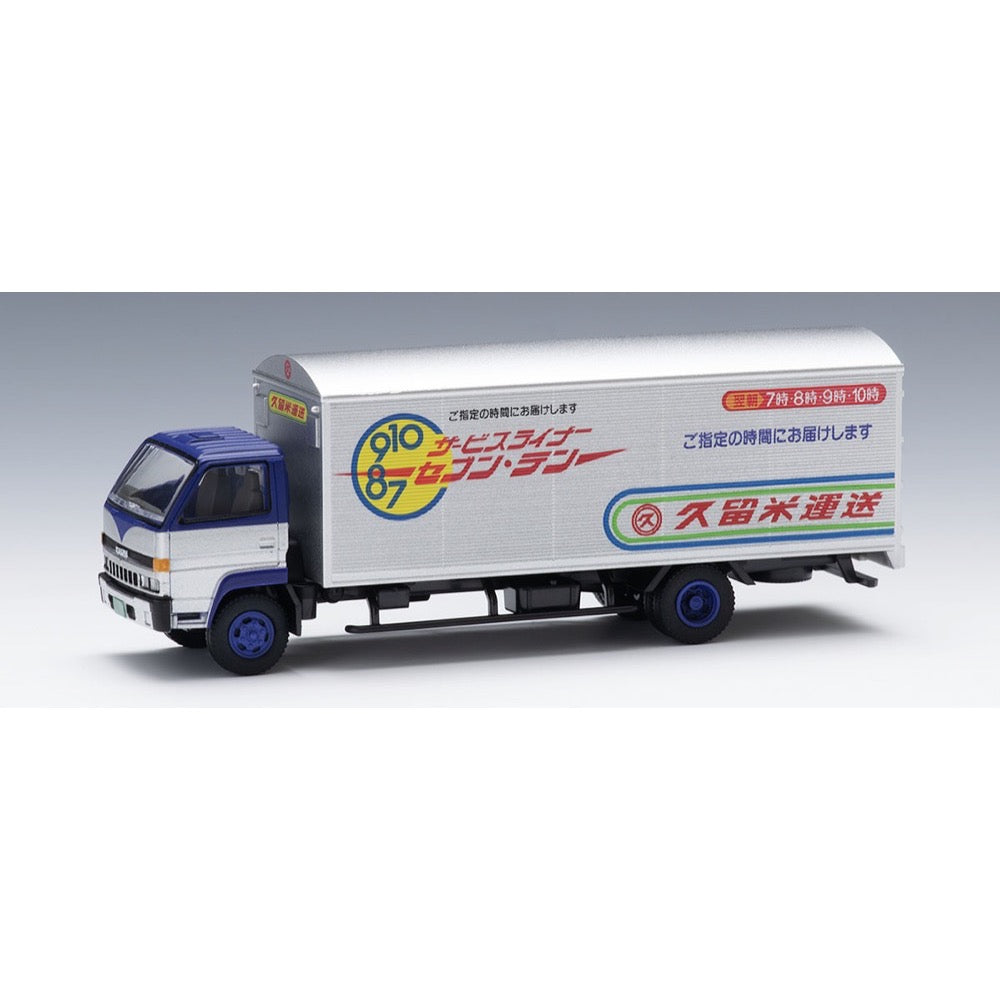
Tomix 53252 HO Piggy back Truck B Kurume Transport
19.00
$
<p>Piggyback Truck B (Kurume Transportation)</p>
<h3>Features</h3>
<ul>
<li>Reproduces the truck that was installed and operated on Kum 80000 and Kum 1000 freight cars from 1986 to 2000</li>
<li>Reproduces the cab shape of the Isuzu Forward Juston</li>
<li>Cab glass is reproduced with clear parts</li>
<li>Tires use rubber material for a realistic texture</li>
<li>Front and rear wheels are rotatable (front wheel steering is non-movable)</li>
<li>Some markings such as number plates are omitted</li>
</ul>
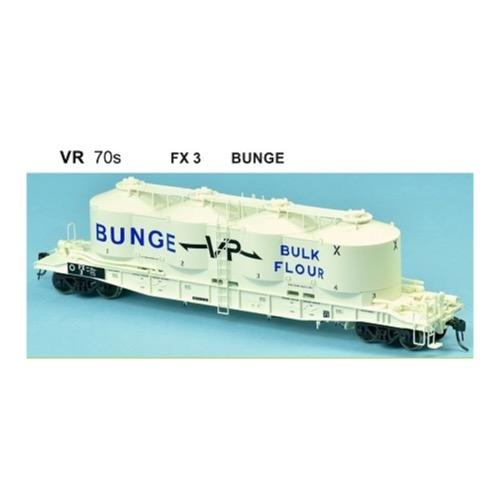
SDS Models VR FX Series 1 1970s FX3 Bunge
29.00
$
<h3>FX / VPFX Bulk Flour Wagon</h3><p>17 of these pneumatic discharge wagons were constructed between 1966 and 1971, they were numbered FX1 to 17. The first series FX 1 to 6 were built at Newport Workshops, the second series FX 7 to 17 were built at Ballarat North Workshops. The original series of wagons were designed so that two of the four hoppers were unloaded from each end. The second series differed from the first series by means of a single discharge point, via additional piping and manifold, at each end of the wagon. When the wagons were first delivered they were finished in silver with a small VR logo, later many of the series received flour company branding and some were also repainted white. Later their use was expanded to cover burnt lime (VPLX) and dried locomotive sand (VZGX).</p><p>Whilst coded FX denoting suitability for bogie exchange they were predominantly used on the broad gauge between Albury NSW and Williamstown Pier and Westall, in the mid-80s some ran on standard gauge to Enfield and Canberra.</p><h3>Model Features:</h3><ul>
<li>Highly detailed Ready-to-Run HO scale model</li>
<li>Injection moulded high quality plastic body</li>
<li>Etched metal walkways</li>
<li>Full brake rigging and underfloor detail</li>
<li>Semi scale metal rimmed wheels</li>
<li>Genuine Kadee #158 whisker coupler</li>
<li>18” Minimum radius recommended</li>
</ul>

Hornby TT4025A TT BR Intercity Mk3 Tourist First E40172
27.00
$
<p>In-order to allow running at 125 mph on Britain's Victorian era railways, new rolling stock was needed by British Railways. Significant improvements over the Mk2 included new secondary air suspension between the bogies and the coach body as well as aerodynamic skirting on the underframe.</p><p>Mk3 coaches are 75ft (23m) long, enabling far greater capacity than older coaches. Mk3 coaches also incorporate disk brakes and wheel slip protection enabling faster deceleration. The first Mk3 coaches to be delivered were used as part of the HST prototype along with the two Class 41 diesel power cars in 1972. Mk3 coaches entered service in 1975 along with the Class 43 forming the iconic InterCity 125 trainset. After the HST Mk3 coach variant was introduced, further Mk3 coaches were introduced to the West Coast Mainline for use as part of locomotive hauled trains. Whilst Mk3 stock is standard for HST units, the standard locomotive hauled stock is Mk3a. Mk3a stock differs from Mk3 stock due to the inclusion of buffers as well as a different electrical system that uses motor generator units in each coach to power air conditioning and other ancillaries Mk3a stock was built until 1984, before 3B stock with improved seating and lighting was built from 1985 to 1988.</p><p>The Mark 3 coaches were introduced into service with the Class 43s as the Intercity 125 service. This top flight service was dressed in a variation of BR Blue with a grey window surround. The Class 43s would be painted in a complimentary colour scheme with yellow noses for safety reasons. The Mark 3 coaches would continue in service in this scheme until the late 1990s. In preservation, some of these coaches have had this distinctive livery reapplied.</p><h3>Specifications</h3><ul>
<li>Item Length - Without Packaging (cm): 19</li>
<li>Item Height - Without Packaging (cm): 2.2</li>
<li>Item Width - Without Packaging (cm): 2</li>
<li>Item Weight - Without Packaging: 0.05</li>
<li>Item Scale: 1:120 Scale</li>
<li>Finish: Painted</li>
<li>Colour: Multiple</li>
<li>Gauge: TT</li>
<li>Operator: BR</li>
<li>Designer: BR</li>
<li>Livery: BR Blue and Grey</li>
<li>Minimum Curve (mm): Radius 1</li>
<li>Number of Parts: 1</li>
</ul>

Hornby R40293 OO LSWR 6 Wheel Coach 3rd Class 648
26.00
$
<p>This 6 Wheeled Coach is a representation of the many which served on the London and South Western Railway (LSWR) in the late 19th and early 20th century.</p>
<p>Small coaches such as this 6 Wheeled Coach proved especially good at branch line work, where their small size was more acceptable to lower passenger numbers, and enabled the traversing of tight radius curves and hauled by smaller engines.</p>
<p>This LSWR coach is modelled as having step boards to enable access at stations with low platforms and oil lamp lighting.</p>
<h4>Include</h4>
<ul>
<li>1x Rolling Stock Coach</li>
</ul>
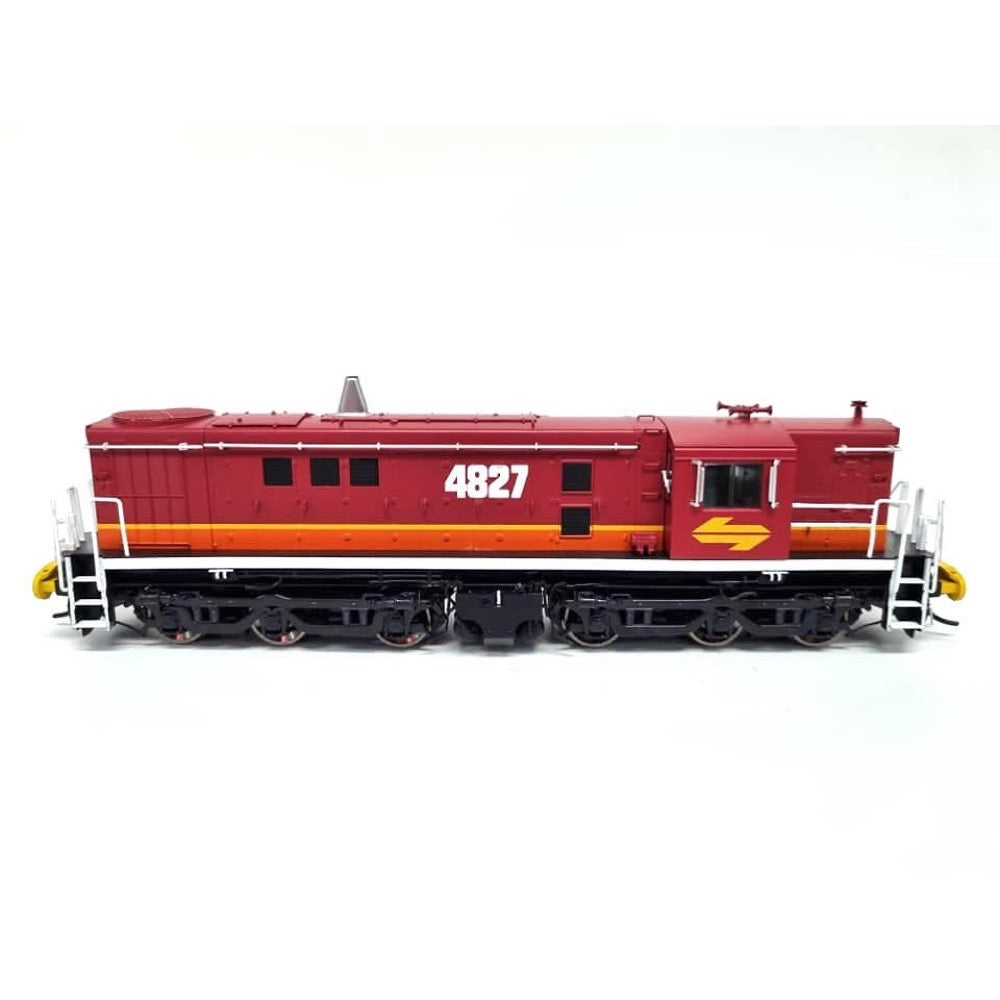
Powerline PR481-2-27 48 Class Mark 1 SRA Candy 4827 DCC Sound Ready
139.00
$
<h3>PLM-PR481227 Powerline 48-class Mark-1 #4827 SRA Candy HO-Scale</h3>
<p>The 48 Class diesel-electric locomotives were built by A E Goodwin (Auburn) for the New South Wales Government Railways between 1959 and 1970. Once the most ubiquitous locomotive in New South Wales, Australia, they are based on Alco frames and prime movers using General Electric electrical equipment.</p>
<h3>Features</h3>
<ul>
<li>HO-Scale<br>
</li>
<li>48-class Mark-1 Co-Co Diesel-Electric<br>
</li>
<li>DCC-Ready (Requires a 21-Pin DCC Decoder)<br>
</li>
<li>Sound-Speaker Fitted</li>
<li>Revised Tooling</li>
<li>Twin-Brass Flywheels</li>
<li>All-Wheel Pickup</li>
<li>Injection Moulded Plastic</li>
<li>Five-Pole Motor</li>
<li>Directional Lighting</li>
<li>Brass-Etched Details</li>
<li>NMRA Wheel Profiles</li>
</ul>
<p> </p>
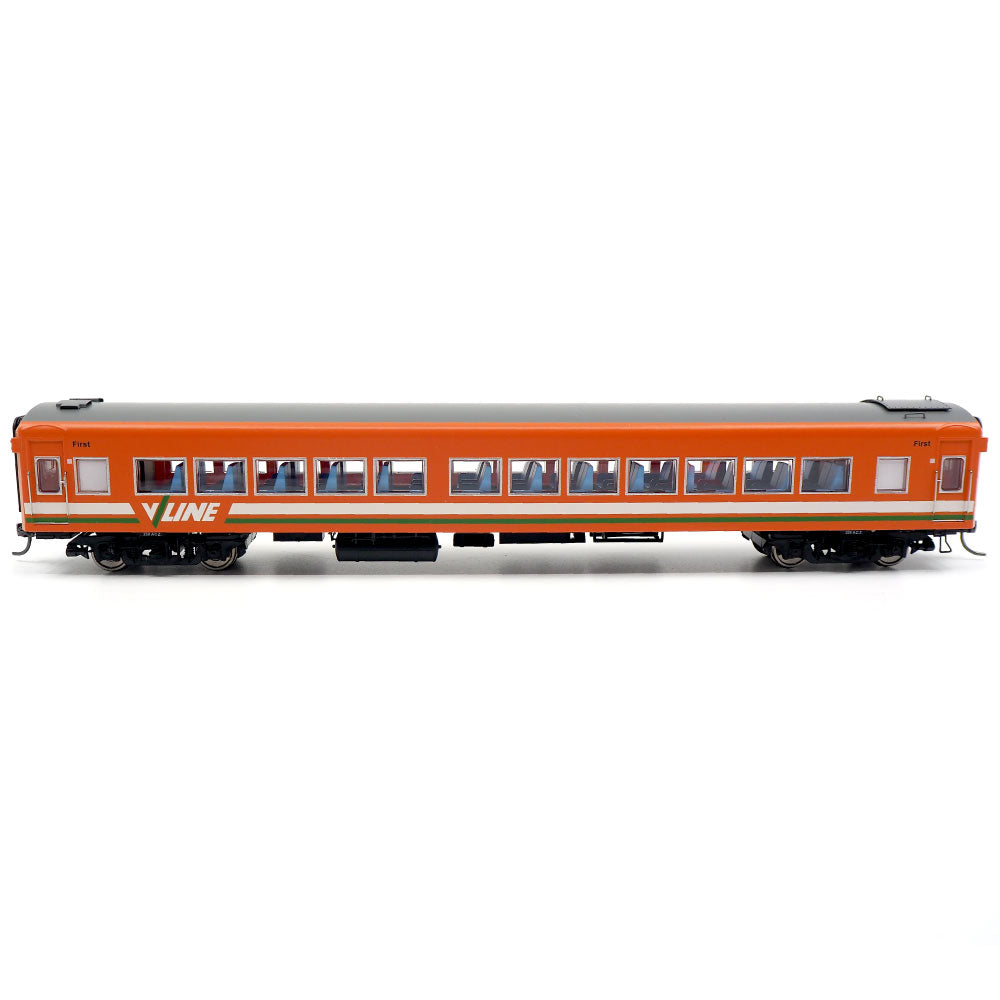
Powerline PC-540B HO BZ 270 787 Operations Z Type Carriage
71.00
$
<h3>BZ 270 787 Operations Z Type Carriage</h3>
<p>The Z type carriages are an air conditioned steel passenger carriage used on the railways of Victoria, Australia. The carriages were constructed by the Victorian Railways from 1957 for use on intrastate services. For most of their service, the Z cars operated as Z sets, however, in the early 1990s most sets were broken up, with carriages merged into N sets. They thus currently run on mixed service with Z sets.</p>
<ul>
<li>Highly detailed</li>
<li>Plastic, resin, and etch metal components</li>
<li>HO Scale</li>
<li>Z-Type Carriage</li>
</ul>
<p><em>ACZ 259 Displayed for illustration</em></p>

